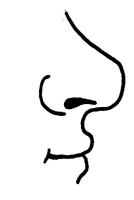 Developing a practice of conscious breathing through the nose is a worthwhile pursuit but most people don’t think that they need to learn how to breathe. Because we do it we must do it right, right? If only that were the case. Learning a conscious approach to breathing through the nose carries with it some serious benefits.
Developing a practice of conscious breathing through the nose is a worthwhile pursuit but most people don’t think that they need to learn how to breathe. Because we do it we must do it right, right? If only that were the case. Learning a conscious approach to breathing through the nose carries with it some serious benefits.
I wrote last week about how I am sleeping with my mouth taped shut at night. If I didn’t I would spend the night breathing through my mouth. With the help of tape I am increasing the amount of oxygen delivered to the brain in the course of the night exponentially. It might be a placebo effect but I feel like I have more energy during the day.
When I take yoga I use what is known as the ujjayi breath always breathing consciously through the nose. The ujjayi breath, also known as the victorious breath, is quiet and meditative and provides a great deal of the benefit that I perceive to be getting from my yoga practice. At its heart yoga is nothing more than a practice of breath awareness and the cultivation of the breath practice has been life changing for me personally.
Conscious breathing is one of the most valuable parenting tools that I have. Not being the most patient parent naturally, I have been working long and hard not to lose my cool with my children. The breath is my guide to controlling my rage, which I must admit is not always controlled (parenting is not easy). Taking a breath is my greatest tool as I try not to react before I inhale deeply. This is more than an image. When my children begin to drive me crazy –like when they have arguments about imaginary friends—I literally close my mouth and take a few deep breaths through the nose. This has been a remarkably effective approach of late.
From the introduction to Light on Yoga
When I first started teaching I used to read the paragraph below at the end of every class that I taught. For me Light on Yoga, remains the bible of the practice.
The Chitta (mind, reason, and ego) is like a chariot yoked to a team of powerful horses. One of them is prana (breath), the other is vasana (desire). The chariot moves in the direction of the more powerful animal. If breath prevails, the desires are controlled, the senses are held in check and the mind is stilled. If desire prevails, breath is in disarray and the mind is agitated and troubled. Therefore, the yogi masters the science of breath and by the regulation and control of the breath, he controls the mind and stills its constant movement. BKS Iyengar
***
